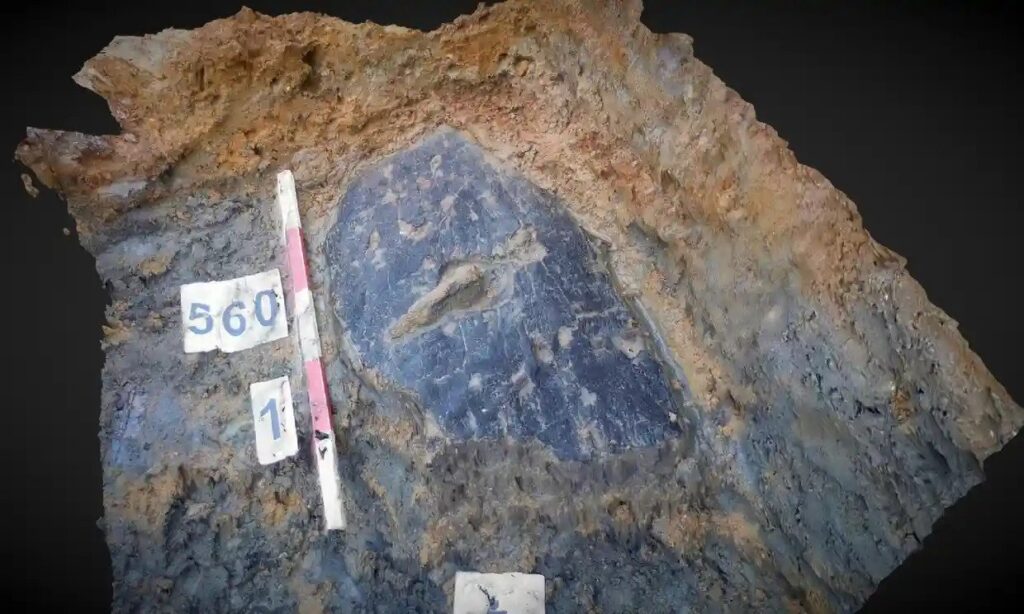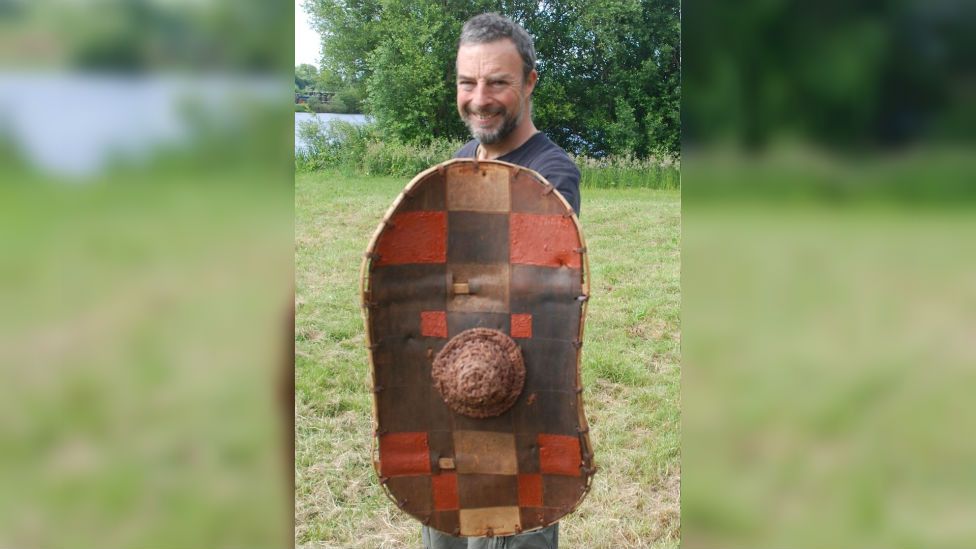A 2,300-year-old Iron Age shield has been revealed by archaeologists

Found during a dig near Leicester in 2015 and dated to between 395 and 255BC, the shield was made of painted bark, backed by wooden spars. Analysis showed it had been badly damaged, probably by spears and edged weapons, before being left in a pit.
Experts said the shield gave an “unparalleled” insight into prehistoric technology.

The shield, which measured 670 x 370mm (26ins x 15ins), was found on the Everards Meadows site near the M1 by University of Leicester Archaeological Services (ULAS) archaeologists.
The bark used was from either alder, willow, poplar, hazel or spindle and the stiffening spars were made of apple, pear, quince or hawthorn.
The shield had a rim of split hazel rod and a boss, to protect the hand, woven from a willow core.

Iron Age
- In Britain, dating from 800BC to AD43
- Iron tools improved agriculture and industry
- There were larger settlements and a more sophisticated society developed
- Seen as ending with the Roman conquest of Britain
Mike Bamforth, from the University of York, used CT scanning and 3D printing to help reveal its secrets.
He said: “This truly astonishing and unparalleled artefact has given us an insight into prehistoric technology that we could never have guessed at.
“Being part of the team working to tease apart the complex secrets of the shield’s construction has been incredibly interesting and rewarding.”
Archaeologists said such shields might have been common in the Iron Age but their organic materials meant they rarely survived.
A reconstruction showed that while it was not as strong as solid wooden ones, the shield could stop blows effectively and had the advantage of being extremely light.
The British Museum, which will store the shield, described it as a “absolutely phenomenal object”.





